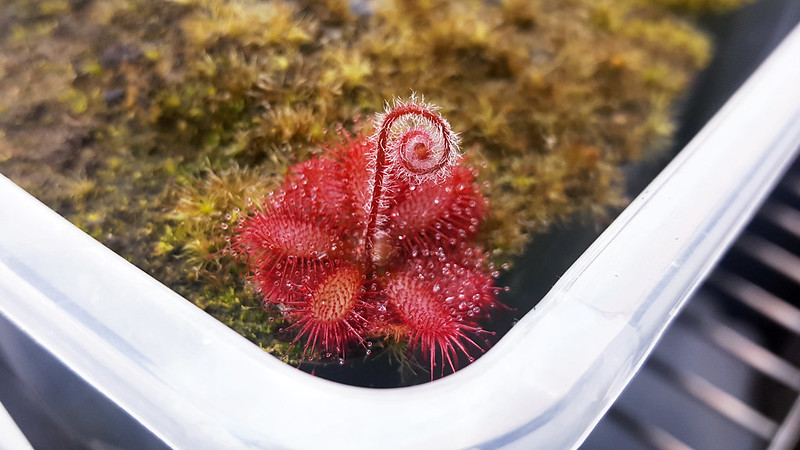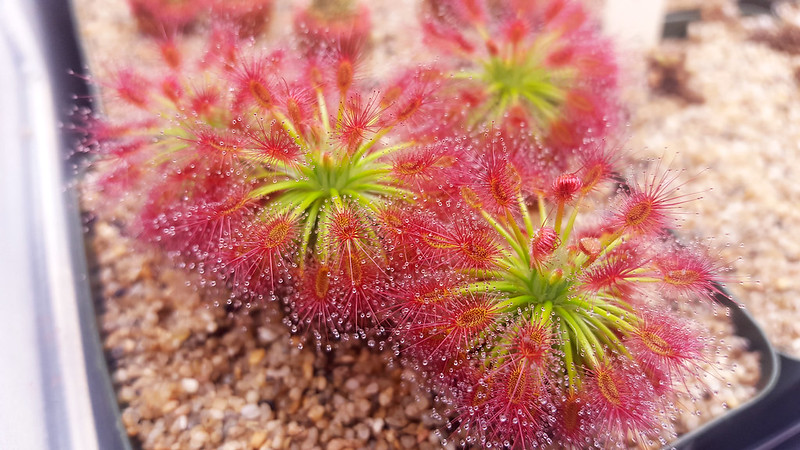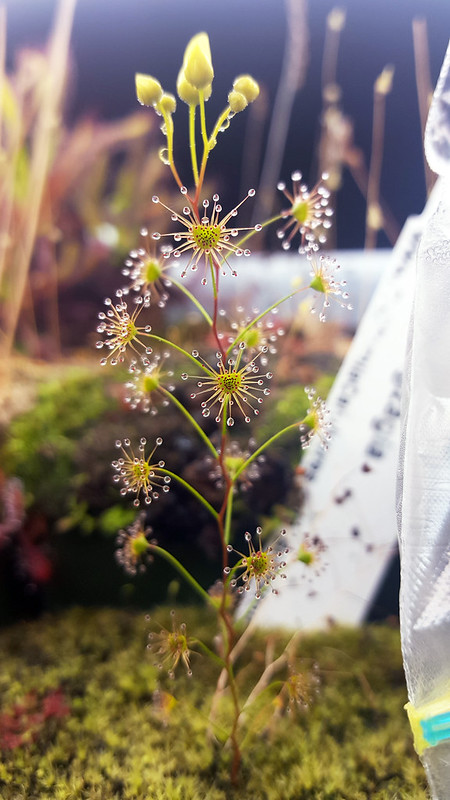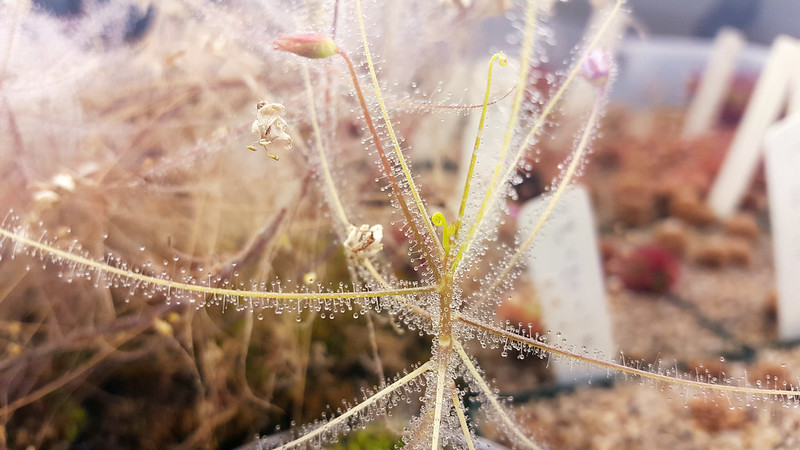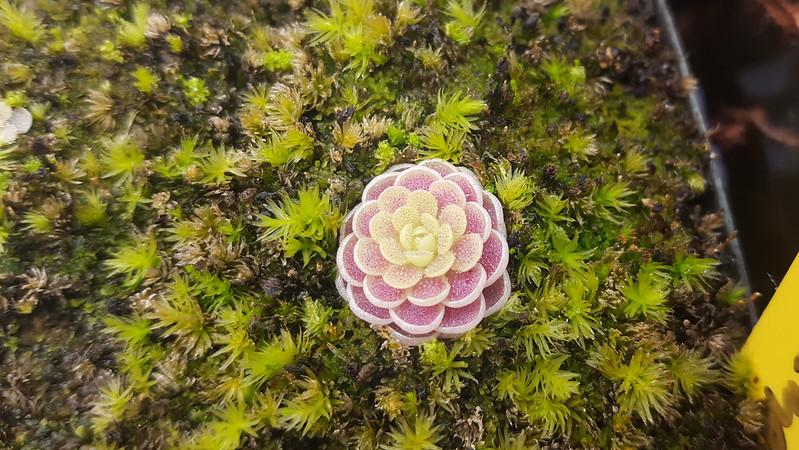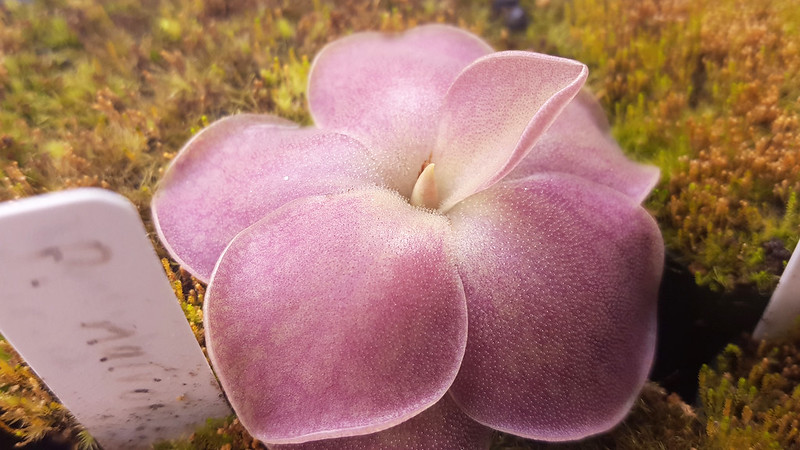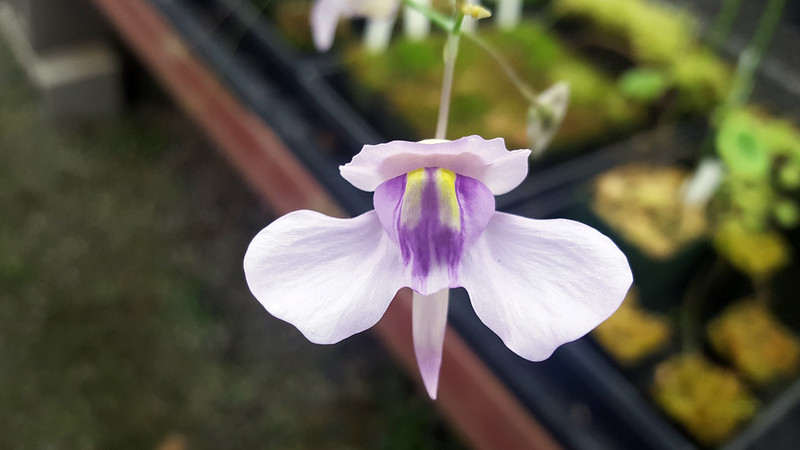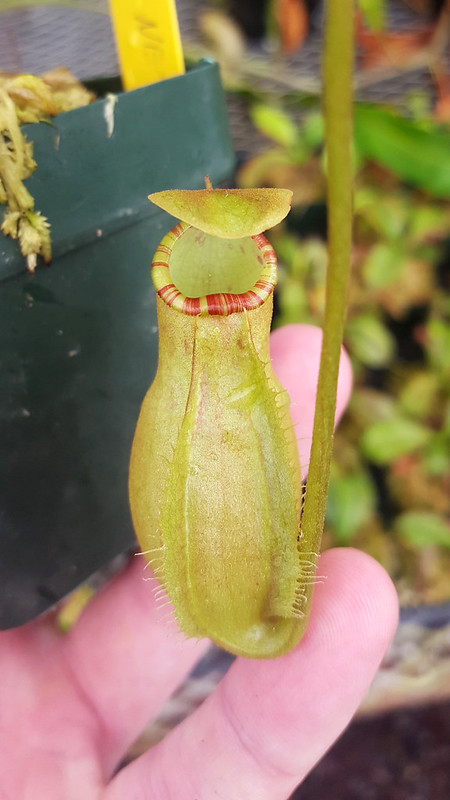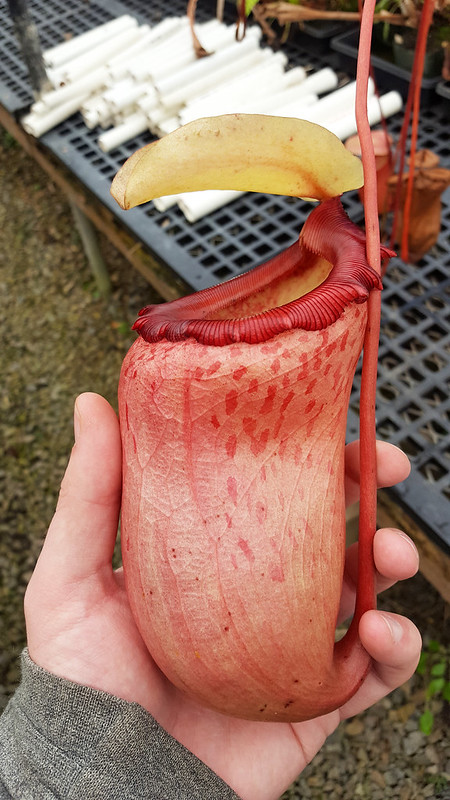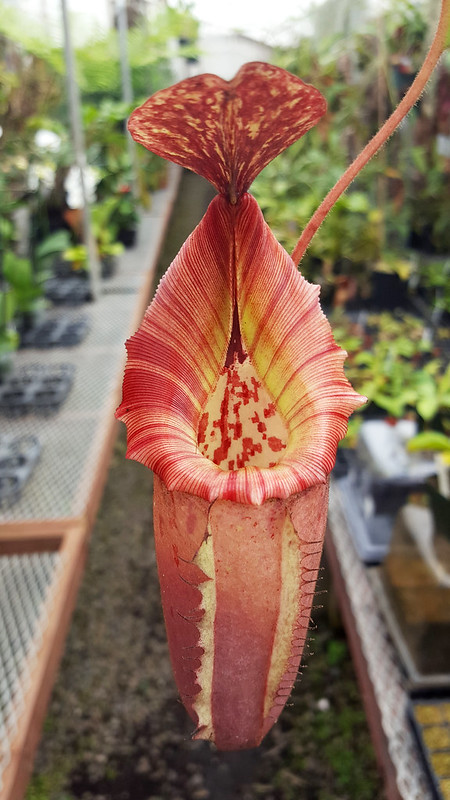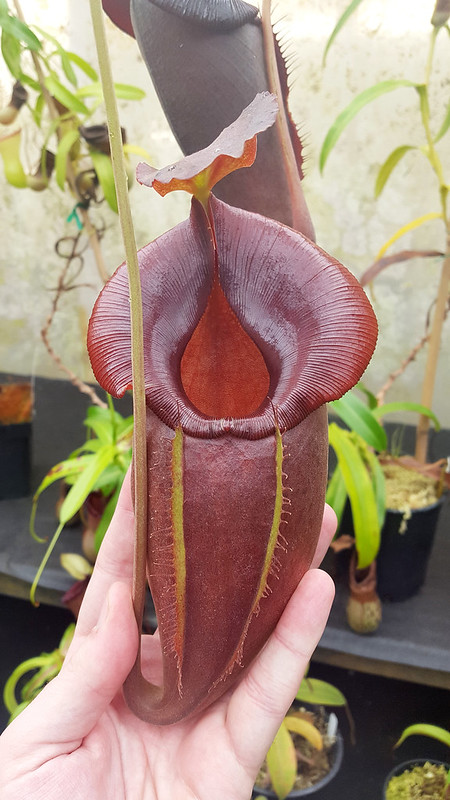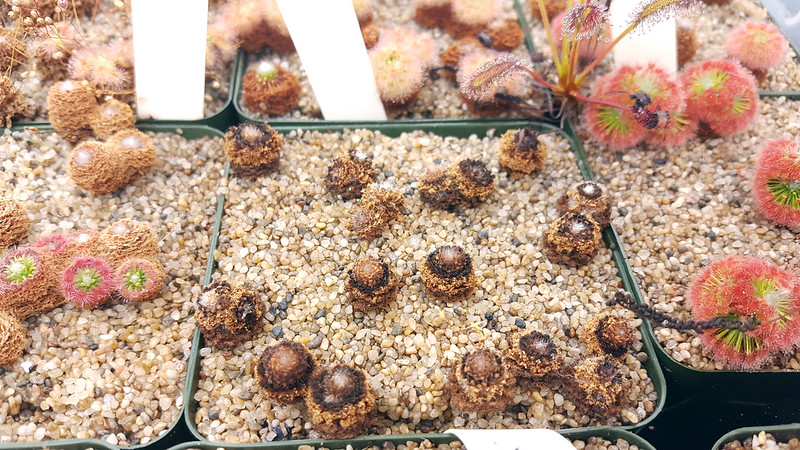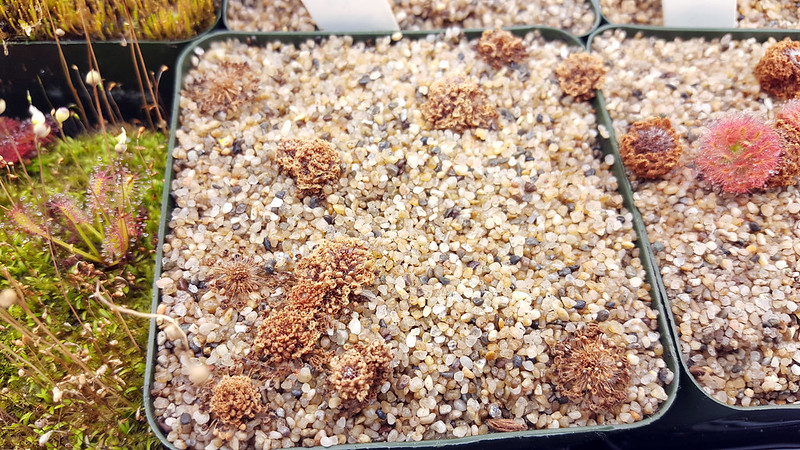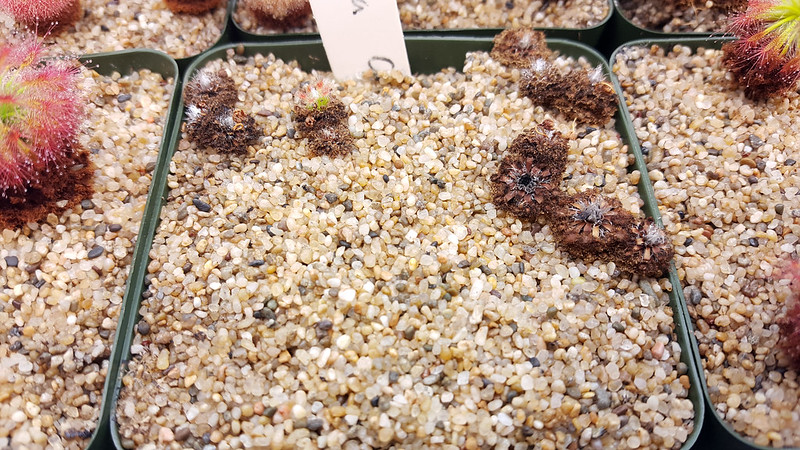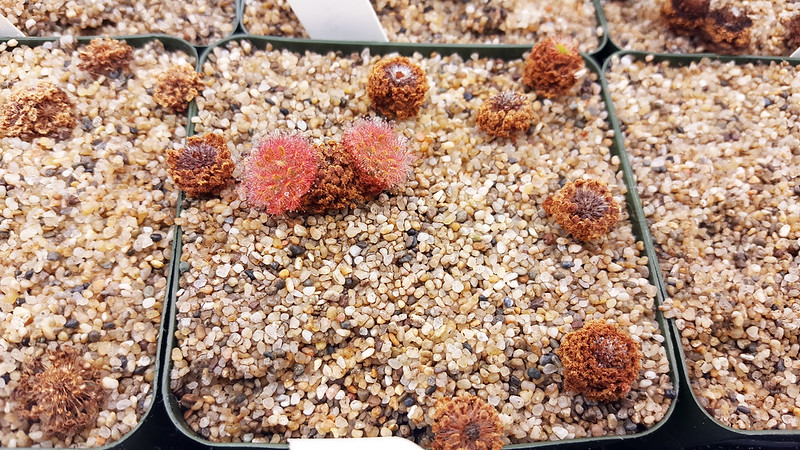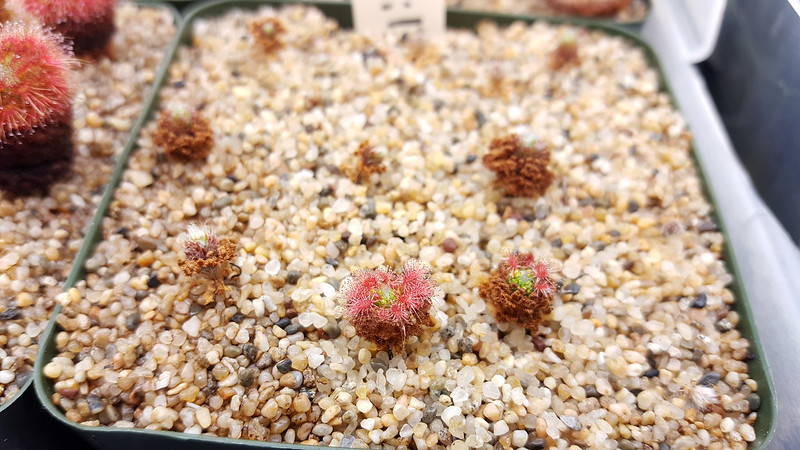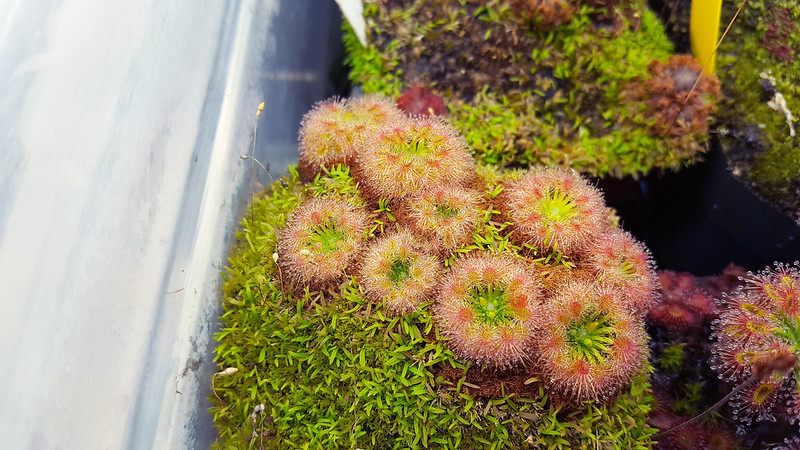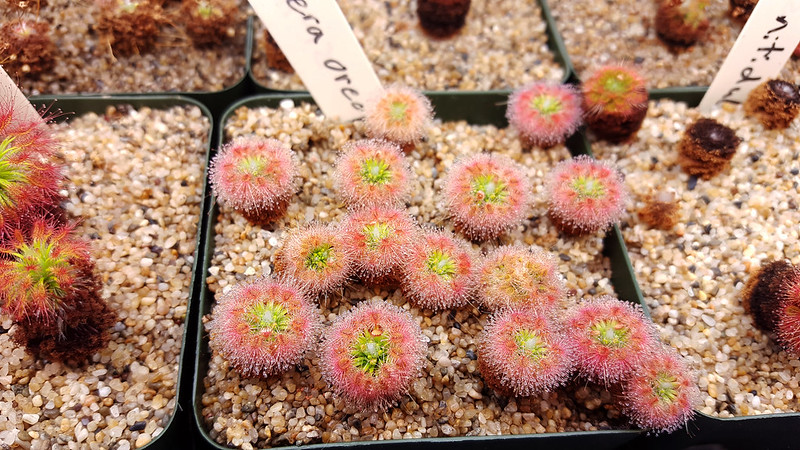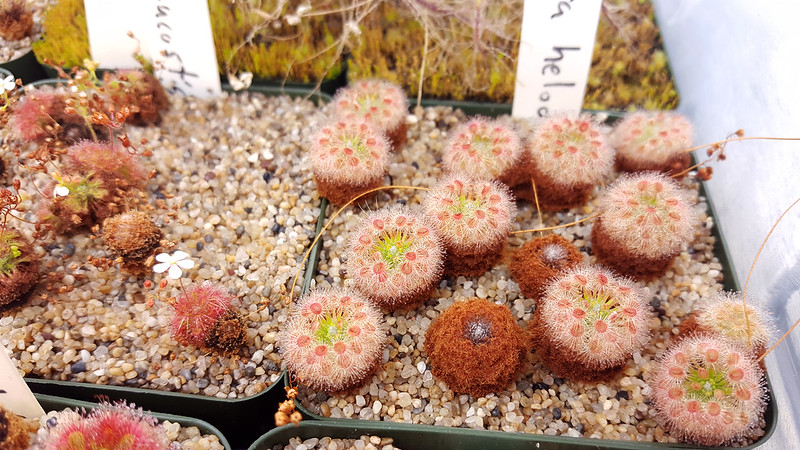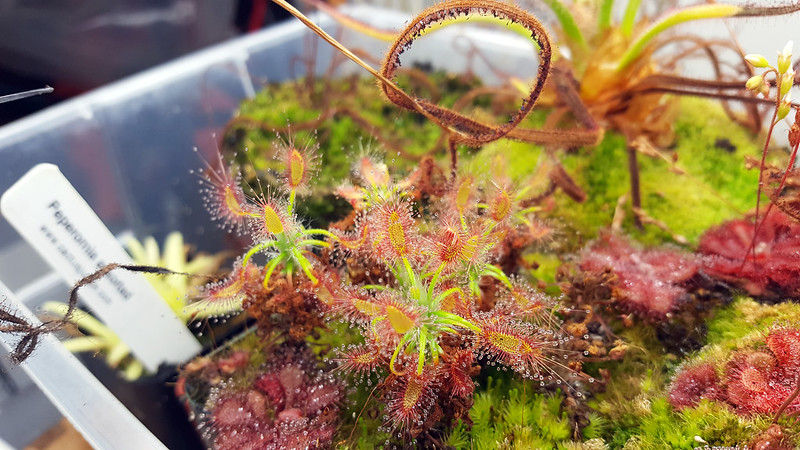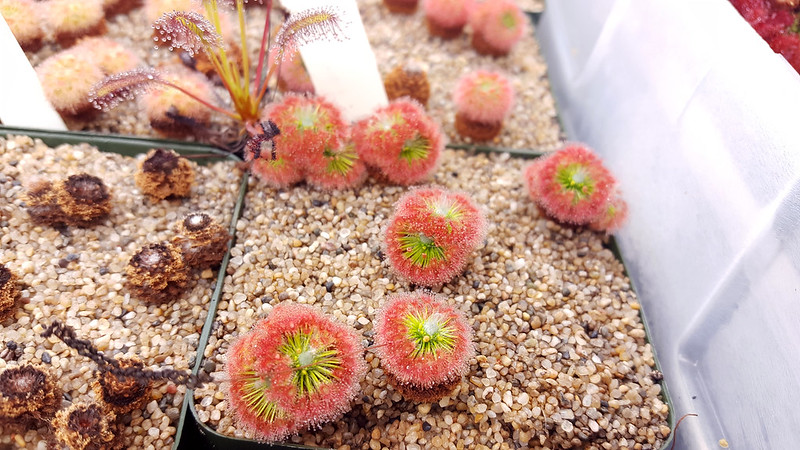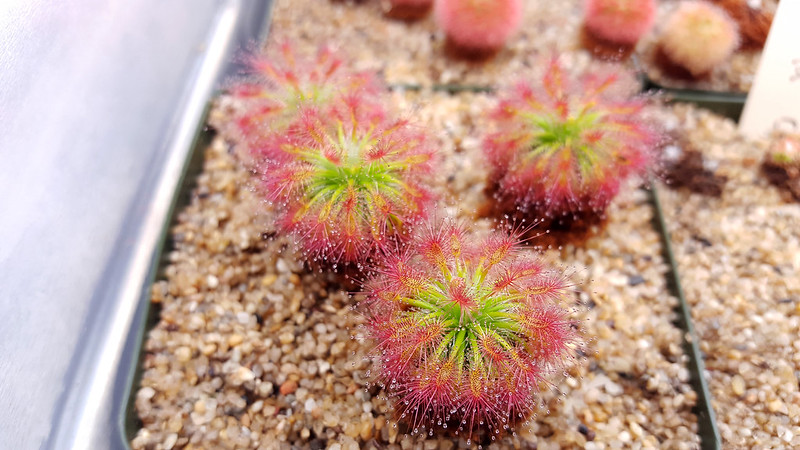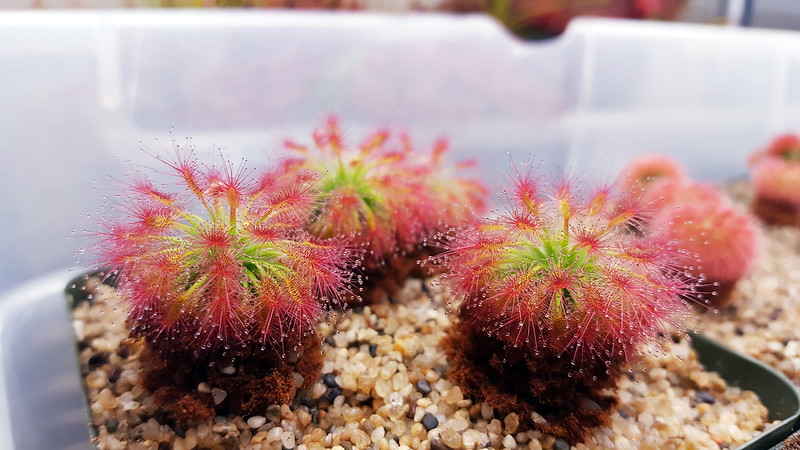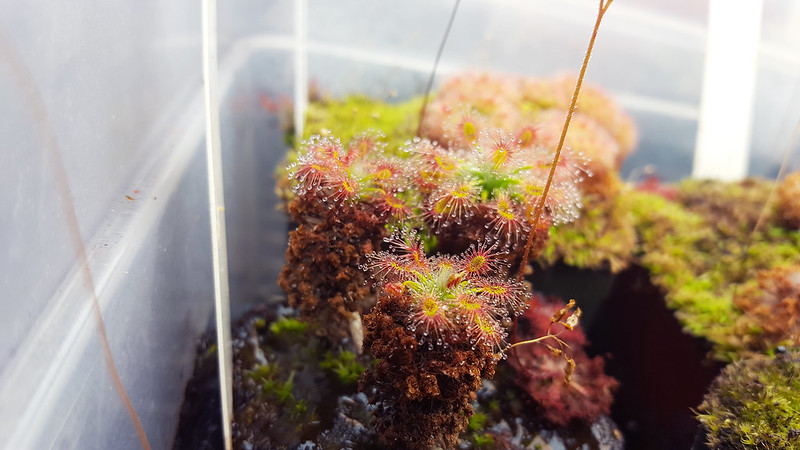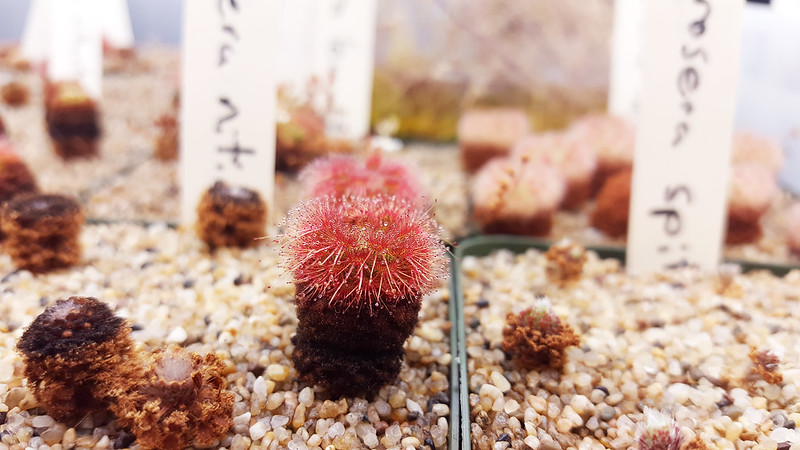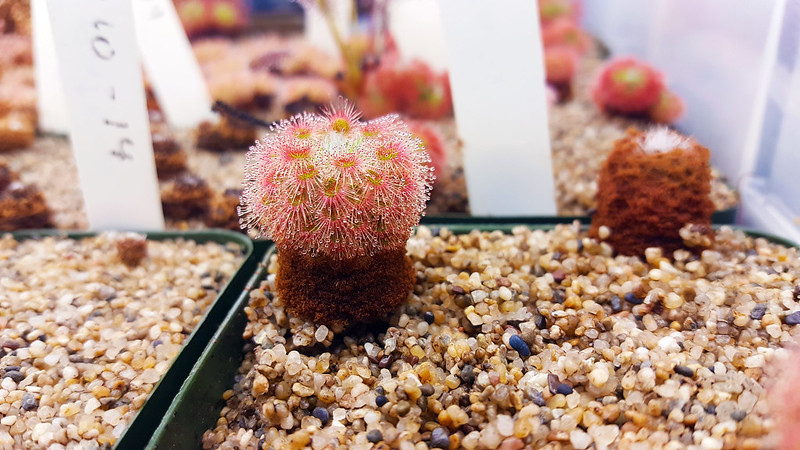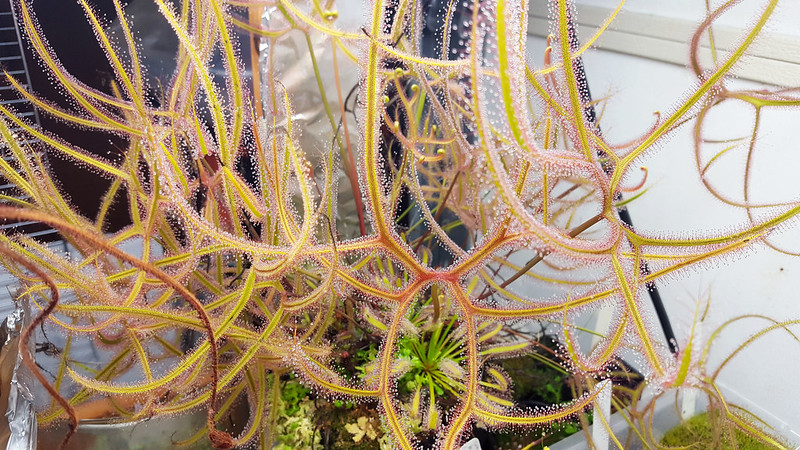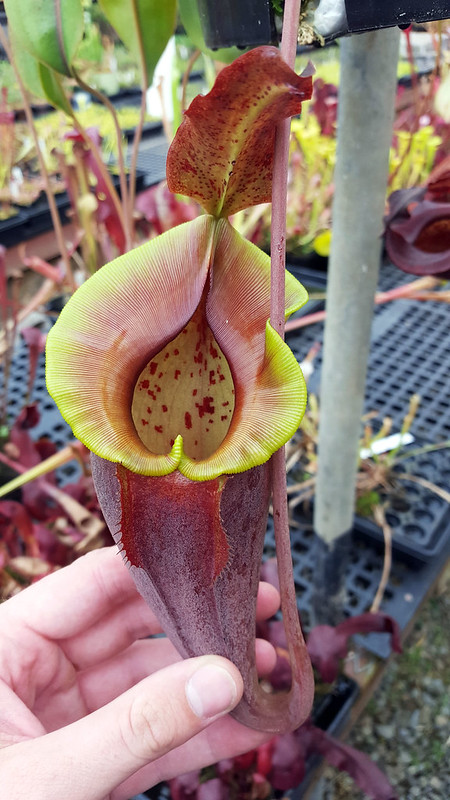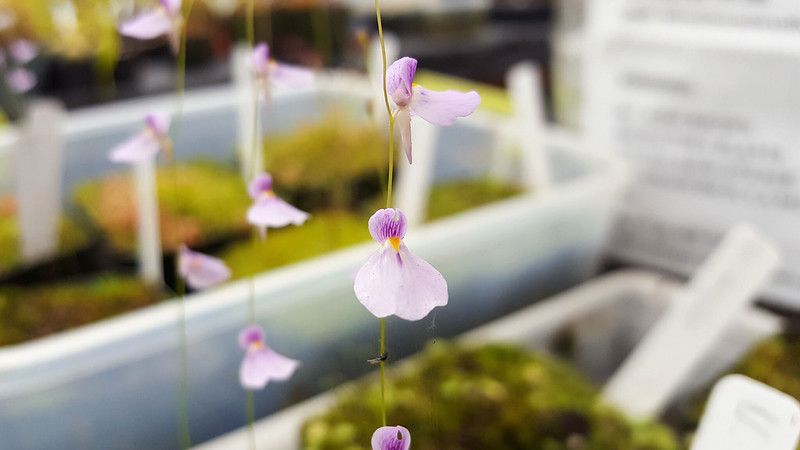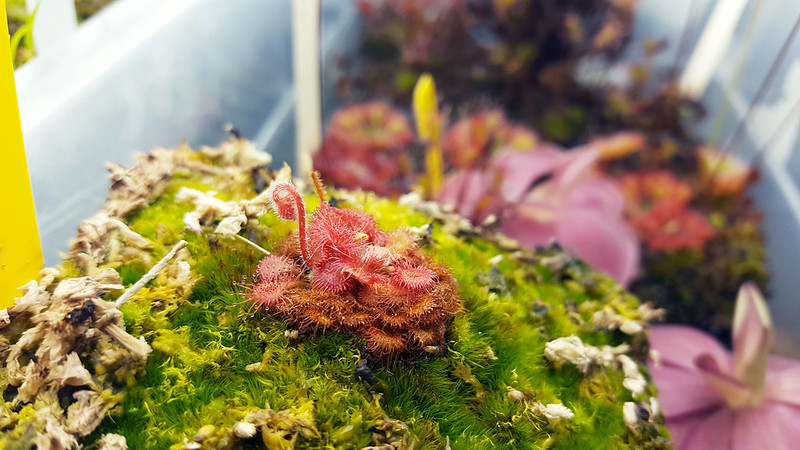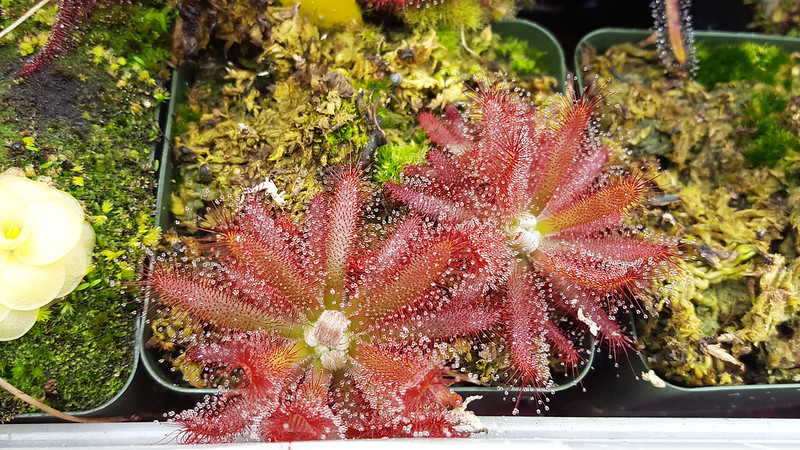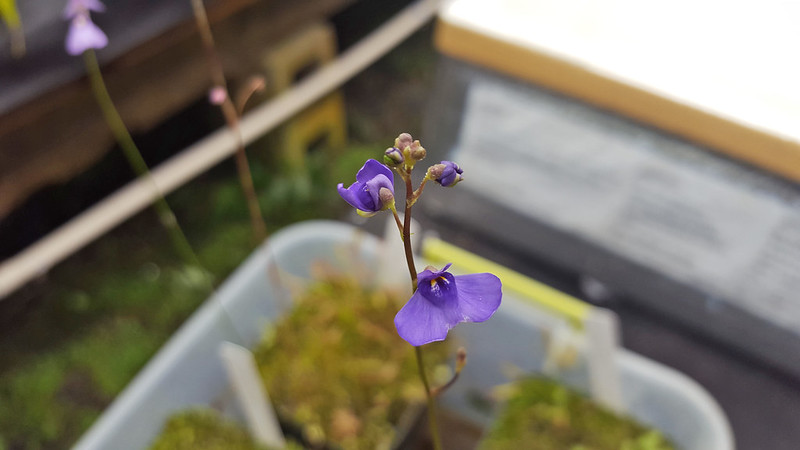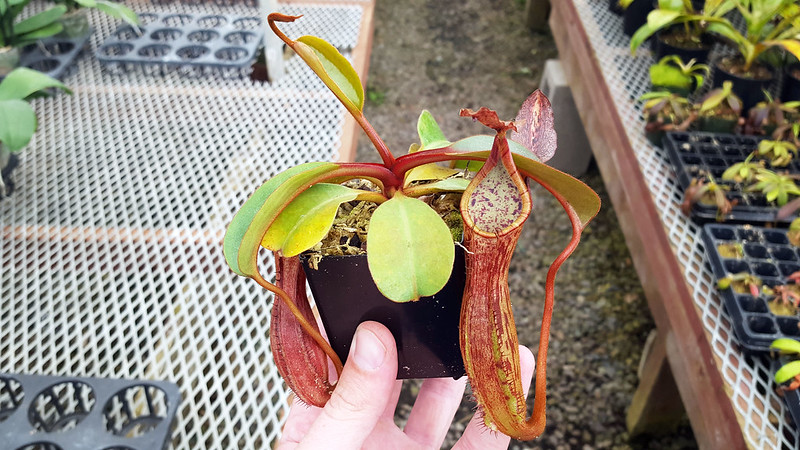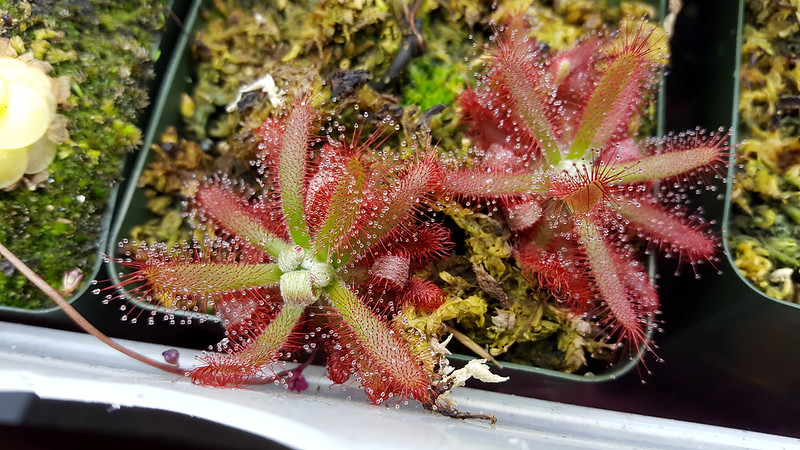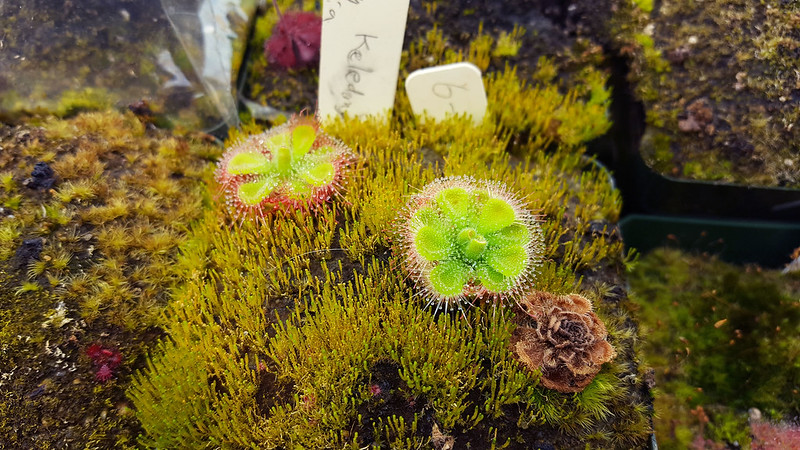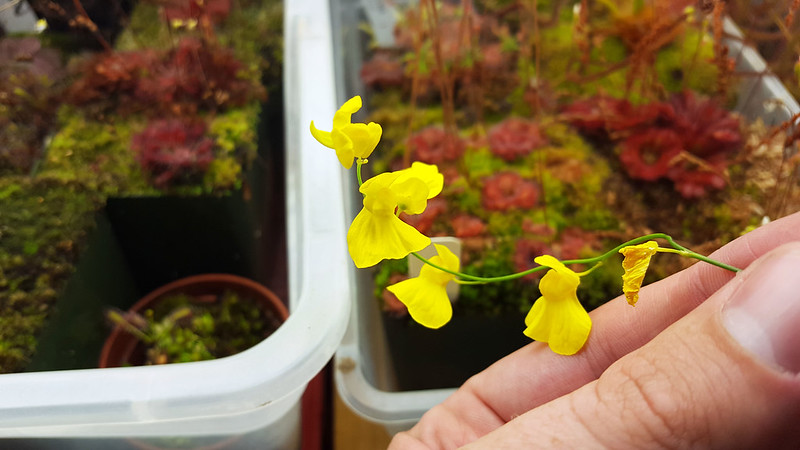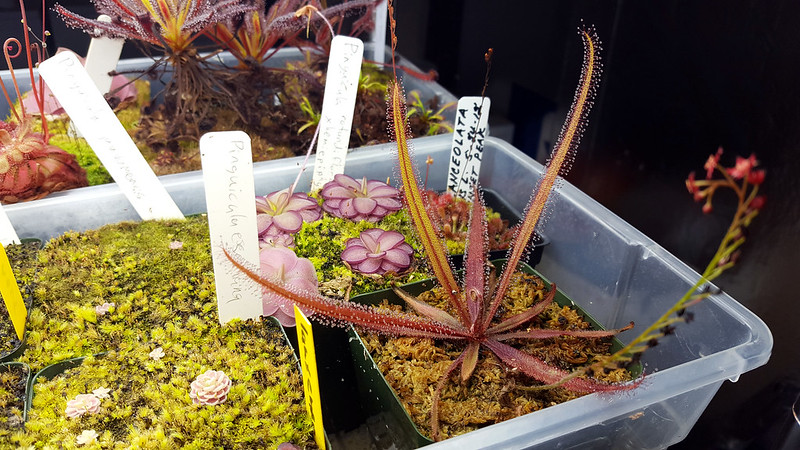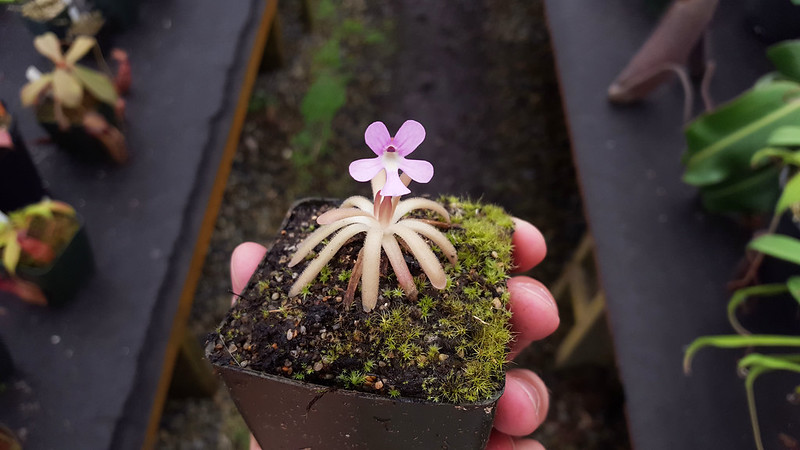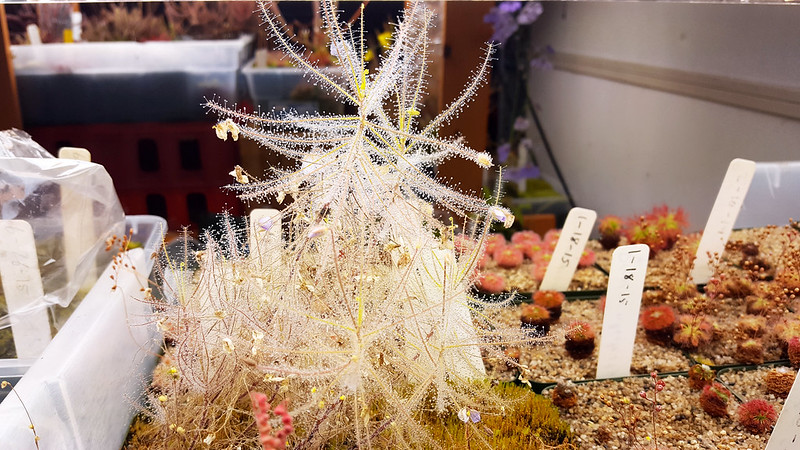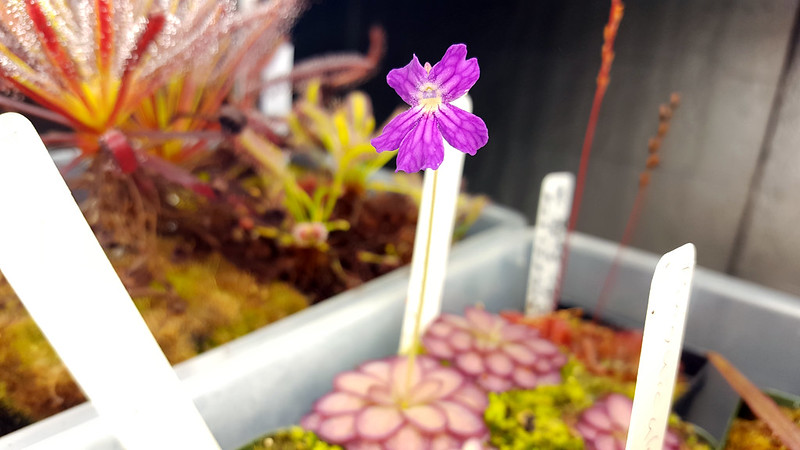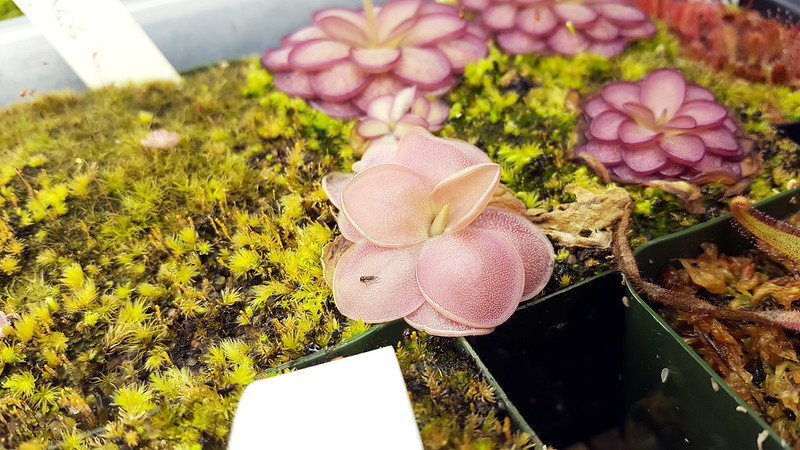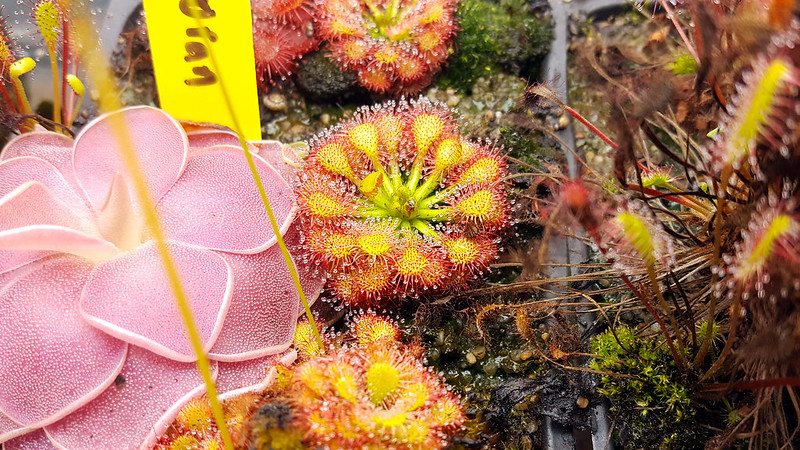If you've followed my blog for very long, you know that most of my personal carnivorous plant growing has been of the indoor, artificial light variety. Since I've been working at
Predatory Plants I've also gotten a decent amount of experience at greenhouse growing. However, for most people, the easiest way to start growing carnivorous plants is in a sunny windowsill. There are also quite a few growers with very impressive windowsill collections. So here's what's been going on in my kitchen lately!
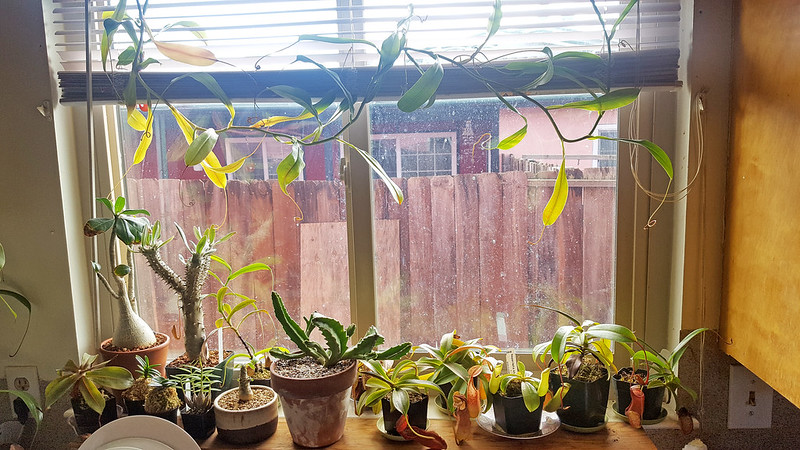 |
| We expanded the windowsill so we could fit more plants into it. |
As you can see, not everything there is carnivorous. On the left I've got an
Adenium obesum I really like. My roommate also has a pretty sweet
Pachypodium sp., and we've got a couple orchids and stapeliads. But to hell with that!
The fiddliest species I grow currently is
Nepenthes spectabilis "giant"
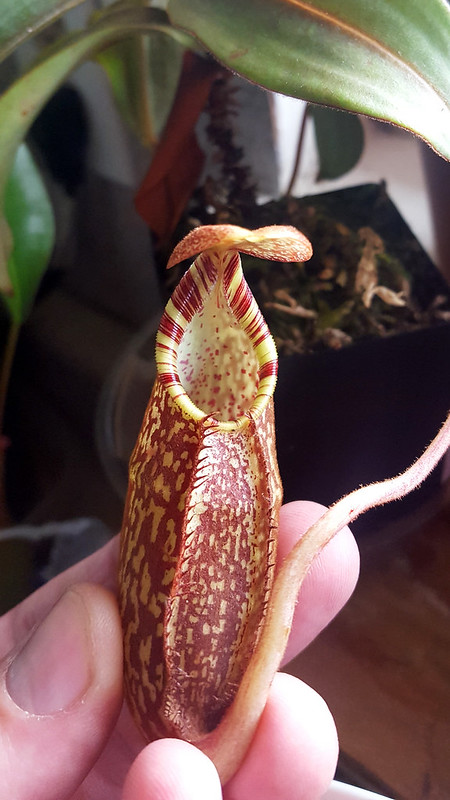 |
| Love the cream-and-red coloring. |
I've waited so long for this pitcher. Josh gave me this almost a year ago, in April 2016. It came with
two lovely pitchers, but those were dropped as soon as it went into my windowsill. This most recent pitcher opened maybe 2 weeks ago, which means I kept it around for 9 months with no pitchers. In the plant's defense, I was pretty bad at watering until a month or two ago. It's been doing pretty well lately.
Another plant that gave me problems at first but turned out to be totally great is this
N. spectablis ×
aristolochioides.
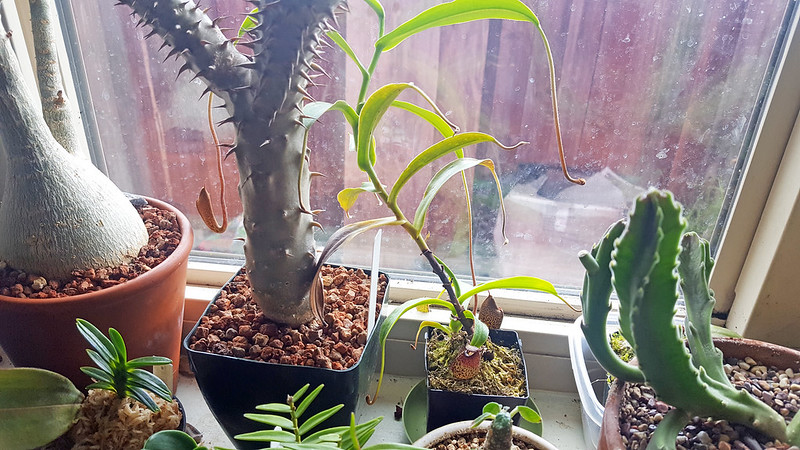 |
| Cute little vine! |
I got this one in October 2015 as a basal from our big breeding plant at Predatory Plants. It was cute enough, but it also dropped its pitchers and just vined for months and months. I was rewarded with a really great pitcher in early autumn 2016 that lasted for month and months. Of course, I didn't really photograph it. Suffice to say, people liked it. Now though, the plant is doing great – the vine has two pitchers swelling, and the basal is doing great, including popping a cute new pitcher.
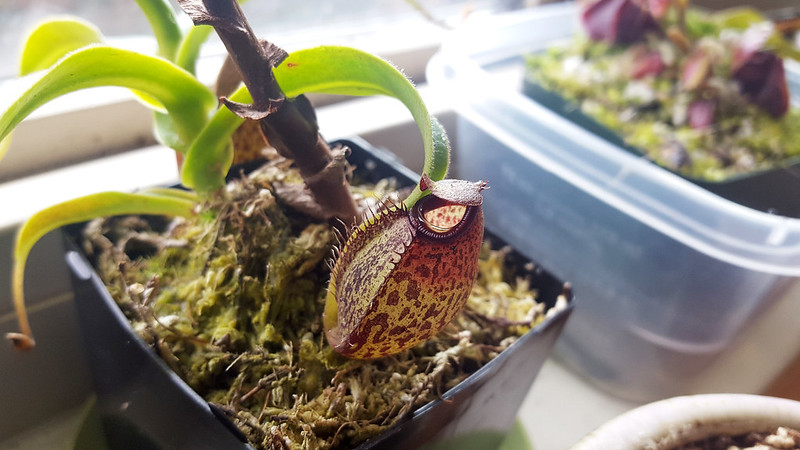 |
| Probably one of the better aristo pitchers. |
This has really put on a lot of biomass since I first got it. I'm going to need to repot it soon.
One of my best plants lately has been
N. hamata ×
platychila. (Check out
this post for the entrance of both it and the
N. spectabilis ×
aristolochioides into my collection.)
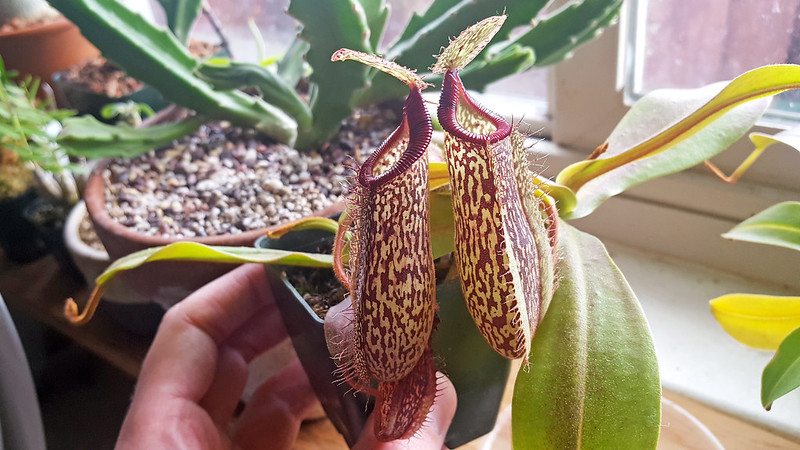 |
| I'm super into this plant of late! |
For the longest time this would only hold one pitcher at once. Then it grew a really strong basal and totally took off this autumn. For the last month and change there were 4 active pitchers, and it just looked great. I think this one really preferred the cooler temperatures and brighter light in winter. The light is brighter because in a south-facing window there are more hours of direct sun in winter, when the sun is lower in the sky. We'll see how this does in summer.
My favorite windowsill plant is
N. khasiana.
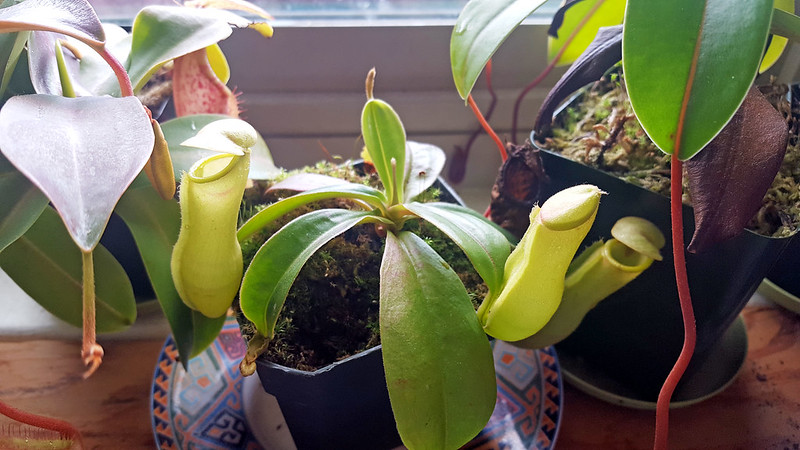 |
| This is one of those plants that very rare, but not that desirable, so it's not too expensive. |
After a few weird leaves early on this one has been really doing great for me. It even held its pitchers during winter, when they'd normally die off. The most recent leaves are a bit small, but I expect it'll do great during summer. Since working at Predatory Plants I've come to really like green pitchers with odd shapes, which this has. My friend Amir says I'm a
Nepenthes hipster.
It's not only Neps that grow in my windowsill though! Amir gave me a
Cephalotus some time ago, and again I didn't document it well. Initially it was small, with immature pitchers. I've kept it in my windowsill and it's doing great!
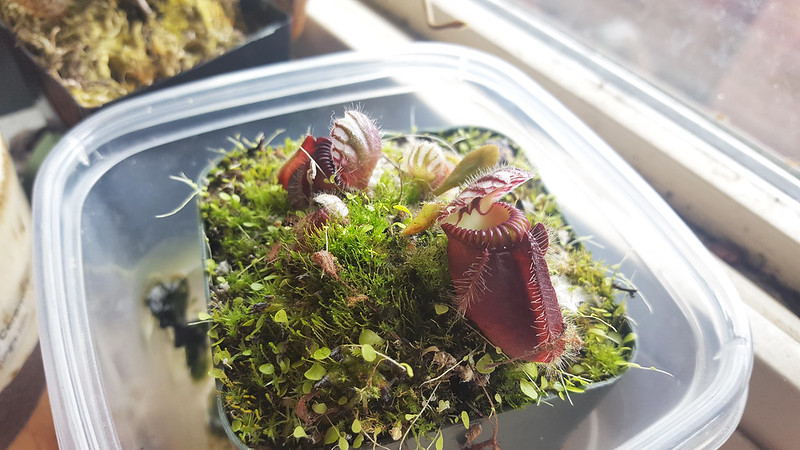 |
| Funny little faces. |
This is a very nice clone with lots of red coloration. I keep it in this tupperware, which I fill with water after letting it go dry for a couple days. I put some Osmocote fertilizer in one of the small pitchers once, but its been really hands-off otherwise. That's
Utricularia sandersonii in the pot, but it hasn't bloomed in months (probably too dry). Whoever said Cephs are hard to grow?
Speaking of Amir, you should go check out his blog,
www.thesundew.blog (I helped him workshop the URL). Amir bought some
Drosera burmannii seeds from me a little over 2 years ago, when he was first getting started with carnivorous plants. Since then he's become quite a formidable indoor grower, with an impressive collection of
Drosera and rare
Cephalotus. His blog has great pictures, and he grows a lot of plants I don't have, so it's worth examining. Here's a
Drosera regia he grew from seed and gave to me a couple months ago.
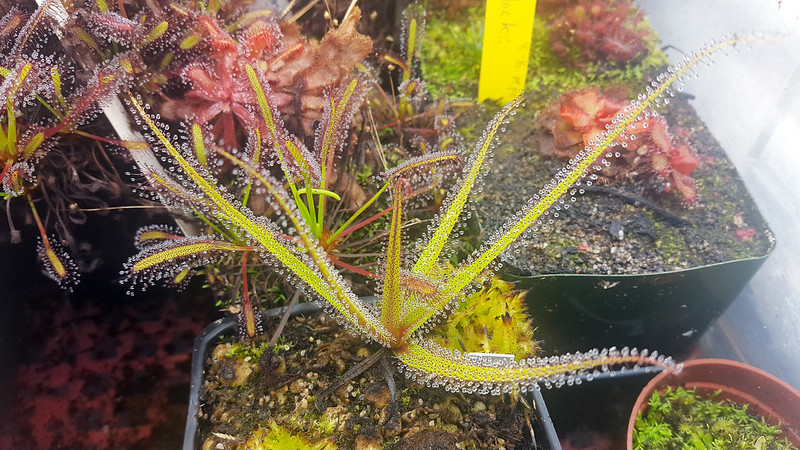 |
| The King has arrived! |
Isn't that great? Go look at his blog, especially since I seem to have become so bad at posting regularly.








